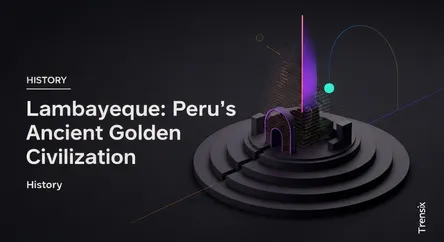History
Lambayeque: Peru's Ancient Golden Civilization

Discover the Lambayeque (or Sicán) civilization of ancient Peru, renowned for its masterful gold artifacts, monumental pyramids, and rich mythology.
What is it?
The Lambayeque civilization, also known as the Sicán culture, flourished on the northern coast of Peru from approximately 750 to 1375 CE. Emerging after the fall of the Moche, they became masters of metallurgy, producing exquisite goldwork, including ceremonial Tumi knives and intricate funeral masks. This society was centered around large religious sites with monumental adobe pyramids (huacas), such as Batán Grande and Túcume. They were also sophisticated agriculturalists, engineering extensive irrigation canal systems to farm the arid landscape. According to legend, the civilization was founded by a mythical hero named Naymlap, who arrived from the sea.
Why is it trending?
Interest in the Lambayeque civilization is continually renewed by spectacular archaeological finds. The discovery of unlooted tombs of the elite has revealed the incredible wealth and artistry of the culture, showcasing their advanced techniques in working with gold, silver, and copper alloys. Iconic artifacts like the golden Tumi are recognized globally. The mystery surrounding their decline, believed to be linked to a series of major El Niño climate disasters around 1100 CE, also captivates researchers and the public alike. Museums showcasing these treasures attract global attention to Peru's pre-Inca history.
How does it affect people?
The Lambayeque civilization left a significant legacy, influencing subsequent cultures like the Chimú, who eventually conquered them around 1375 CE. Today, their archaeological sites are a vital part of Peru's national heritage, attracting tourists and scholars from around the world. This tourism helps support local economies in the Lambayeque region. For modern Peruvians, the civilization is a source of immense cultural pride, offering a deeper connection to their ancient history and demonstrating the ingenuity of their ancestors long before the rise of the Inca Empire.